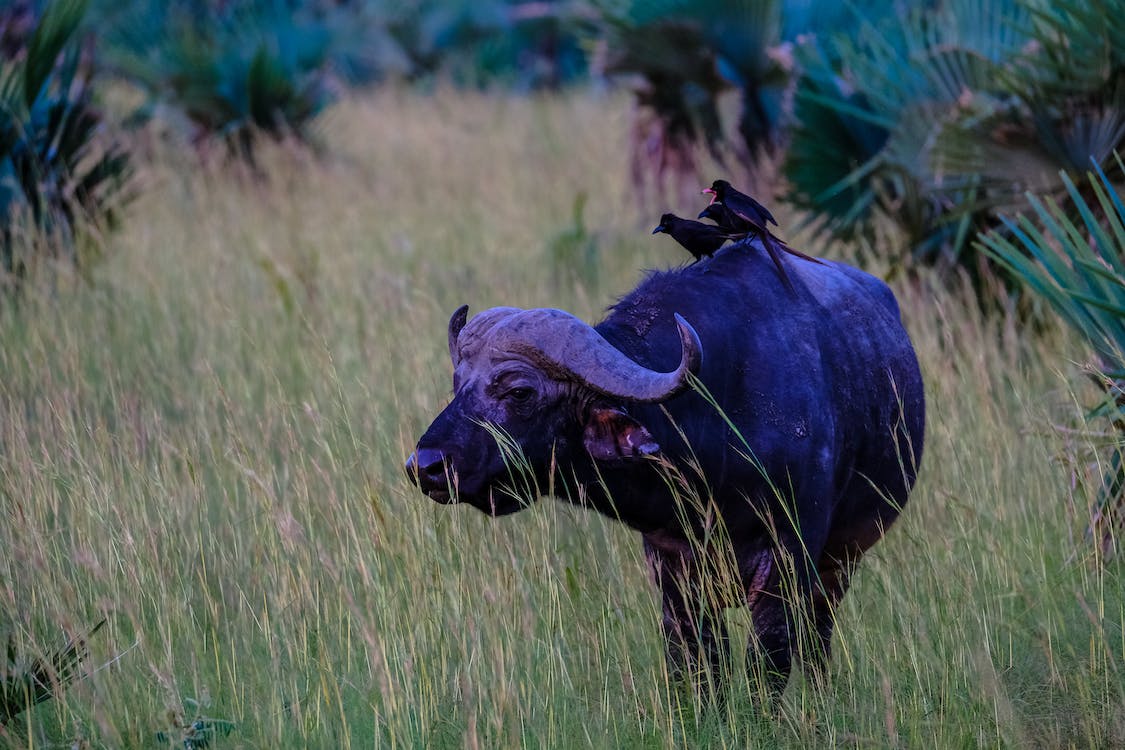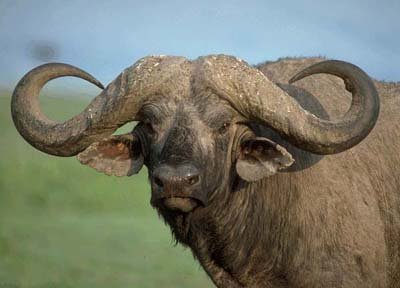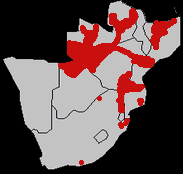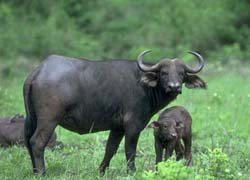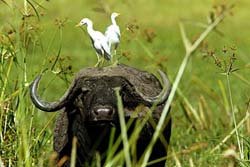Swedish naturalist Anders Sparrman first described this species in 1779. He was an apostle of the father of modern taxonomy, Carl Linnaeus.
The Cape Buffalo is not an ancestor of domestic cattle. Instead, it is a distant relative of other larger bovines. Its unforeseeable temperament proves that this mammal has never been domesticated, unlike a Water Buffalo—a buffalo species native to India, Southeast Asia, and China. As a member of Africa’s Big Five game animals, the Cape Buffalo is a sought-after trophy for hunters.
Even though they are widely distributed across the African continent, there appears to be an imminent extinction of this species. Therefore, the International Union for Conservation of Nature (IUCN) Red List listed this species as Near Threatened.
Its nine levels of scientific classification are as follows:
Kingdom: Animalia
Phylum: Chordata
Class: Mammalia
Order: Artiodactyla
Family: Bovidae
Subfamily: Bovinae
Genus: Syncerus
Species: S. caffer
Subspecies: S. c. caffer
The physical description of a Cape Buffalo
The Cape Buffalo is a massive mammal with even-toed ungulates. It is characterized by their lean, stocky build and massive horns. Both male and female Cape Buffalos have horns with no ridges. Just on top of their rounded hooves are dewclaws. Its shoulder height ranges from 1 to 1.7 m, whereas its head-and-body length measures from 1.7 to 3.4 m. Compared to other large bovids, a Cape Buffalo has a stocky body and short, thickset legs that makes them short in height. An adult Cape Buffalo can weigh from 500 to 1,000 kg. Males are heavier than females.
It has a black or dark brown coat. Older Cape Buffalos sometimes posses whitish circles that surround their eyes and face. Female Cape Buffalos have reddish coats. Meanwhile, a characteristic feature of a male Cape Buffalo is its horns—the horn bases are very close, forming a shield that is called a “boss.” From the base, the horns separate downwards, then curves upwards and outwards.
The distribution and habitat of Cape Buffalos
Cape Buffalos are native to east and southern Africa, particularly in southwest Ethiopia, Kenya, Rwanda, Uganda, Tanzania, Malawi, Zambia, and some parts of South Africa. The distribution is sparse in countries like Mozambique, Angola, and Swaziland.
This species can practically take refuge in any habitat as long as it has perennial water and grass source. Cape Buffalos are found in lowland forests, lowland rainforests, grasslands, montane forests, Acacia grasslands, coastal savannas, woodland savannas, plains, and semi-arid bushlands. They also prefer habitats with dense covers like thickets and reeds.
The behavior of a Cape Buffalo
Cape Buffalos form herds that mainly consist of females and their offspring. Herds have subherds, which consist of subordinate males, high-ranking individuals, and old ones. Young male Cape Buffalos tend to keep their distance from dominant bulls, which typically have thick horns.
The breeding season happens during the rainy season. The birth peak occurs early in the aforementioned season, while mating peaks later. Once a cow (female Cape Buffalo) is in heat, a bull will closely guard her, keeping other bulls away. This situation can be quite difficult for both sexes, as cows tend to be more evasive when in heat, thus attracting more bulls. By a cow attains full estrus stage, the herd's most dominant bull would be the cow’s mate.
The cow will undergo a gestation period of 11.5 months. Newborns remain hidden for the first few weeks before joining the herd. Their mothers will take good care of them until they are independent enough to live on their own. It is observed that cows and their offspring form stronger, exceptional maternal bonds than other bovids.
The diet of a Cape Buffalo
This species is a grazer, primarily relying on grasses and sedges for nutrition. They feed on various types of grasses. They spend an ample amount of time chewing their cud or bolus to maximize the nutrients that they are getting.
WILDLIFE PARKS AND RESERVES WHERE THIS SPECIES IS FOUND:

